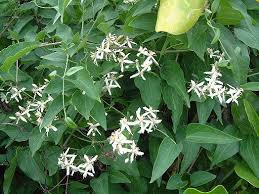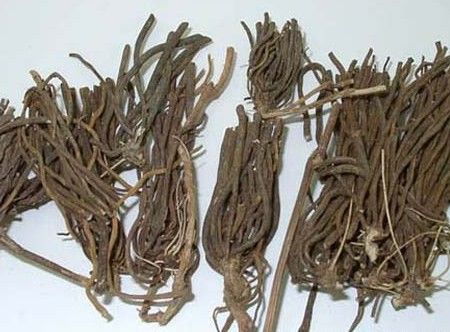- Joint pain- expecially in the upper
extremities due to Wind Damp painful obstruction, with
Notopterygium
incisum- Qiang huo.
[4]
- Joint pain- espcially in the lower extremities due to Wind Dampness obstructing
the channels, with
Achyranthes bidentata-
Niu xi.
[4]
- Fish bones lodged in the throat, with vinegar and brown sugar.
[4]
- Fish bones lodged in the throat, another combination, with
Amomum
villosum- Sha ren.
[4]
[1] Barefoot Doctor's Manual- 1977 Prepared
by the Revolutionary Health Committee of Hunan Province. Original Chinese manual-
Victor W. Sidel. Originally published by Dr Joseph Quin and the Fogarty International
centre, Bethdesda (1974). Madrona Publishers Seattle Washington ISBN 0-914842-52-8
[2] A Complete English Dictionary of Medicinal Terms in Chinese Acupuncture
and Herbalism 1981- Henry Lu Chinese Foundations of Natural Health- The Academy
of Oriental Heritage, Vancouver, Canada.
[3] Translation notes from Gary Seiford and Hocu Huhn- NSW College of Natural
Therapies. Sydney Australia.
[4] Chinese Herbal Medicine Materia Medica- Dan Bensky and Andrew Gamble- Eastland
Press 1986 Seattle Washington ISBN 0-939616-15-7
Images
1.
kominakata.cocolog-nifty.com
2.
[1]
3.
zhongyaoyi.com
Anemonin, anemonol, sterols, saponins, phenols, oleanolic acid.[1]
References
[1] Chinese Herbal Medicine Materia Medica- Dan Bensky and Andrew Gamble- Eastland
Press 1986 Seattle Washington ISBN 0-939616-15-7
 HABITAT:
HABITAT:
 Clematis
chinensis.
威
灵 仙 Wēi
líng xiān Chinese
clematis Family: Ranunculaceae
Clematis
chinensis.
威
灵 仙 Wēi
líng xiān Chinese
clematis Family: Ranunculaceae

 HABITAT:
Found growing wild on hillsides, along strream edges.
HABITAT:
Found growing wild on hillsides, along strream edges.